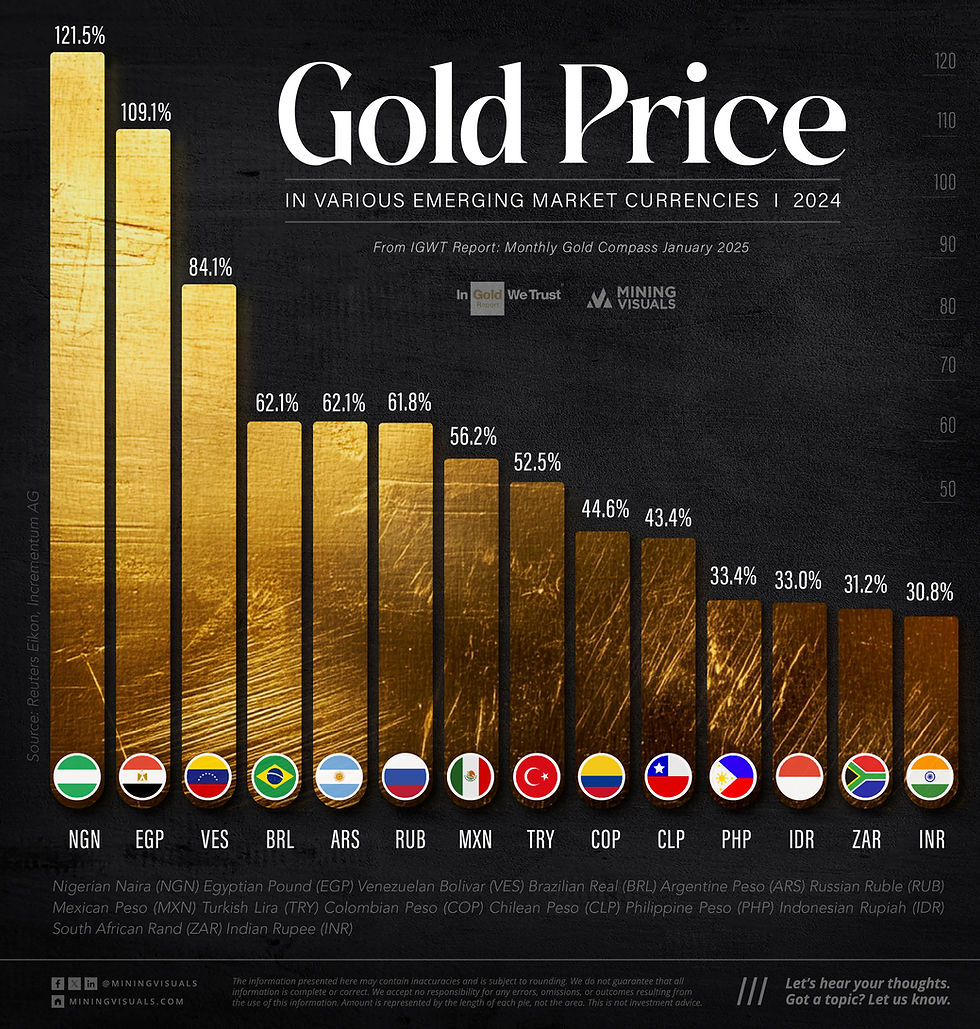Gold in Various Emerging Market Currencies, 2024
- Mining Visuals
- Feb 6
- 1 min read
Updated: Feb 26

In 2024, gold prices surged across multiple currencies, particularly in emerging markets.
This graphic presents data from the In Gold We Trust Report (January 2025), illustrating how gold prices evolved in various emerging market currencies throughout the year.
🔗 To read the full report, visit In Gold We Trust.
In Nigeria, the Naira's 121.5% rise in gold prices was driven by multiple devaluations by the Central Bank of Nigeria (CBN), high inflation surpassing 28%, and a severe USD shortage that pushed investors toward gold as a store of value.
Similarly, Egypt experienced a 109.1% increase, primarily due to the Egyptian Pound losing 50% of its value following an IMF-driven currency float. Inflation soared above 35%, and as confidence in the local currency declined, Egyptians turned to gold to safeguard their wealth.
Venezuela, with an 84.1% increase, continued to struggle with hyperinflation and currency volatility. Many Venezuelans relied on gold and USD as alternatives to the Bolívar, while the government’s dependence on gold reserves further contributed to price surges.
Moderate increases were observed in Brazil (62.1%), Argentina (62.1%), Russia (61.8%), Mexico (56.2%), and Turkey (52.5%), where inflation and economic uncertainty played key roles in gold price appreciation.
Lower but still notable growth between 30-45% was recorded in Colombia, Chile, the Philippines, Indonesia, South Africa, and India, reflecting a broader trend of rising gold demand in emerging markets.